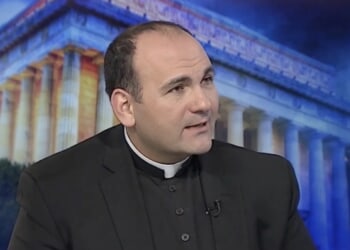PROSPERITY THROUGH GROWTH: Boosting Living Standards in an Age of Autocracy and AI by Dr Arthur B. Laffer, Matthew Elliott, Michael Hintze and Douglas McWilliams
The authors of this book admit the politics of growth are harder than the economics.
It is one thing to draw up, as they do, a plan for greater economic freedom, in order to increase prosperity by unleashing the animal spirits of wealth creators, quite another to gain consent for the plan’s implementation.
In the last part of the book, the authors consider this problem, which they illuminate by interviewing various former politicians and officials.
Nick Macpherson, who joined the Treasury in 1985 and served as Permanent Secretary from 2005-16, points out that “you have to go back to Nigel Lawson to see a Chancellor who has actually thought about tax in the round, and who was interested, genuinely interested, in reform“.
While serving as Chancellor from 1983-89, Lawson carried out the greatest tax reforms in living memory. He was deeply involved before that, both in drawing up plans for reform while the Conservatives were in opposition, and from 1979 in implementing such bold measures as the abolition of exchange controls.
Those years show what can be done, but also illustrate the pitfalls of trying to do it. Margaret Thatcher could have been overthrown at any time during her prime ministership, which lasted from 1979-90. To get to the top in politics, and stay there long enough to make an appreciable difference, demands an astonishing combination of qualities, and a fair bit of luck too.
One must be obdurate, but know when to give way. One must have the necessary arguments about policy, but be willing to acquiesce in inferior solutions. One must lead from the front, but not too far in front, or country and party will overthrow you.
Ferdinand Mount, who had a spell as the head of Thatcher’s Policy Unit, recalls in his memoir, Cold Cream, that at his leaving party at the end of 1983, “all the Thatcherite top brass were there”, including Lawson, Sir Geoffrey Howe, Sir Keith Joseph and Norman Tebbit, but “the room was only half full”:
“It was as though the Thatcherites, though firmly ensconced in the Presidential palace, remained a minority tribe which had seized power through a chain of accidents but would never be regarded as legitimate by the majority tribes who would continue to think of them as a bit weird.”
Thatcher and Lawson fell out, and in 1989 he resigned. So a year later did Howe, which precipitated her own downfall.
We catch echoes of these unhappy events in the book under review. No government can long survive deep divisions in Downing Street. Here is Boris Johnson describing how it all went wrong, still unwilling to concede that one of his tasks as Prime Minister was to remain sufficiently united with the Chancellor:
“We should never have dropped the Planning Bill. Rishi [Sunak] totally watered it down by the end, and it was gone. We should not have dropped the infrastructure plans. We should never have put taxes up in the way that we did…I don’t want to blame the Treasury, but I kept waiting for Rishi to kind of pupate into this Lawsonian figure that I thought he was going to be.”
Lawson, one should note, could only be Lawson because Howe, his predecessor as Chancellor from 1979-83, had performed the herculean task of getting the public finances back into some kind of order.
Sunak, Chancellor from 2020-22, believes in sound money: he was Howe, not Lawson. Johnson’s failure to keep Sunak on side was to prove as fatal as Thatcher’s failure to remain on civil terms with Howe.
Tony Blair told the authors of this book that the job of leadership is to set out what you think the people need and persuade them that’s what they want. He recalled that in the 1980s, he could not work out why on individual policies Thatcher polled badly, but she kept on winning elections.
He at length came to the view that people reckoned: “Yeah, but you put her all together, there’s a clear direction, and basically we support it.”
So it is possible to take people with you by giving them a clear sense of direction. Johnson agrees:
“I think you need to level with people. And I used to have fantastic arguments about that. So our old friend [Dominic] Cummings, you know, he was basically a sort of national socialist, right? That was one of the problems. He said the NHS would basically be fire-hosed with money and corporation taxes. His argument was that anything for business was bad juju with the public, and you shouldn’t do it.”
No one else, so far as I know, has quoted this swipe at Cummings as “a sort of national socialist”, found on page 364 of this 400-page book. The Johnson alliance with Cummings worked while they were breaking the Brexit logjam in the second half of 2019, a task where outrageous behaviour had an essential part to play.
But as soon as Brexit was done, the question arose of what it was for. Were we now going to fire-hose the NHS with money raised from extra taxes, and become ever more risk-averse?
Or did we see ourselves as a buccaneering nation, newly liberated from the suffocating burden of EU regulation, able now to reduce the size of the state and set our wealth creators free?
This argument never ends. Victories by either side create demand for movement in the opposite direction. Who now in Germany attends to the teaching of Ludwig Erhard? But his time will come again.
One of the charms of this book is that one of its four authors, Dr Arthur Laffer, after whom the celebrated curve is named, has never gone away.
I regretted not taking my copy of the book to the launch party, where the sprightly 85-year-old Laffer could be seen autographing copies, his signature including the famous curve.
Early in the book, Laffer recalls that on 28th January 1981, eight days into his presidency, Ronald Reagan removed price and allocation controls on the domestic oil industry, which The New York Times and others predicted would lead to higher prices:
“On a personal note, I was an adviser for Occidental Petroleum president Robert Abboud at the time of President Reagan’s decontrol of oil. At a board meeting around that time, I stated to the assembled group that with Reagan’s oil decontrol, oil prices would fall sharply. There and then Armand Hammer, chairman of the board, fired me and had me escorted out of the building. Ouch!”
But as Laffer goes on to relate, from January to May 1981 the price of West Texas intermediate crude, one of the industry’s bellwethers, remained at $38, but it then fell to a low of $28 the following May, rose briefly again to $36, before falling to under $12 in 1986.
Laffer admits that regulation sometimes makes sense: in the 1960s and 1970s the air in Los Angeles was toxic, and in his home town, Cleveland, Ohio, “the Cuyahoga River and Lake Erie were polluted beyond belief. Today, they are clean. Regulations can be an enormous benefit.”
He has interesting things to say about the public sector: “To rely on altruism to achieve efficiency is a serious mistake.” Recent British experience illustrates this.
In their dedication, the authors say: “Incentives matter.” That is the book’s message in two words.
The argument for incentives has to go on being made. One sees this in families, where the first generation founds a successful enterprise, and the second generation consolidates the success, but the third generation becomes decadent, wastes its substance on frivolities, and loses control of the original business, which either collapses or is taken over by people better able to run it.
As with families, so with nations. Success leads to decadence, followed either by collapse, or by a new, more serious government. Anyone intending to be part of a new, more serious government of the United Kingdom should read this book, but will also have to attend with the closest care to the politics, and be able to cope with failure.


![Scott Bessent Explains The Big Picture Everyone is Missing During the Shutdown [WATCH]](https://www.right2024.com/wp-content/uploads/2025/11/Scott-Bessent-Explains-The-Big-Picture-Everyone-is-Missing-During-350x250.jpg)













